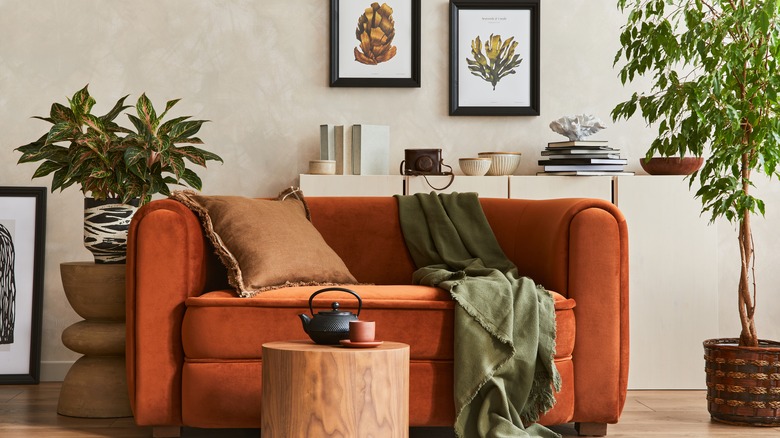Nate Berkus Explains How To Style Furniture For A Cohesive Home
Picture this: everything you own is starting to feel disconnected from other furniture pieces. It's like, over the years, your home got less 'homey.' You have decided to restyle your home, but nothing seems to fit, no matter which way you work it. This can happen to anybody and, frankly, could be happening to you right now. But what if the answer was quite simple? What if someone told you that it's all about scale? What if that someone was one of the world's most influential designers, Nate Berkus?
Well, it is, and Berkus explains that "It's all about scale, if you have a high-backed sofa, low chairs are probably not going to sit with that attractively" in an interview with MyDomaine. The best way to fix this problem is to remain calm and relax into a vision of your space, and based on this advice by Nate Berkus, think about what furniture needs to go and what needs to stay when styling for a cohesive home. But first, it's important that everybody is on the same page and speaking the same language.
Scale vs. proportion
Scale can often be confused with proportion in the world of interior design as they both have to do with the size of objects, but they differ in context. Scale is understanding how one piece or object relates to others in the same space, including the space itself and a human figure. Whereas proportion is the understanding of specific design elements on an object or piece, like size, shape, texture, and color, and the connection of those between other parts of the whole.
Ensuring that all furniture is to scale is vital to the look and feel of your space. Each piece should be scaled to the rest of the furniture, not necessarily the size of the space. Say you have a large room and a small sofa ... that's okay! If the rest of the furniture scales up with it, like the coffee table and chairs, you can achieve quite a striking look with negative space.
So when Nate Berkus says, "It's all about scale," now you know what he's talking about, and if you want that cohesive look between all your furniture, just start designing around your most important furniture. Is it the sofa or the chairs? The coffee table or the lighting fixtures? Make a ranked list of your furniture pieces in each room, and there, you now have a blueprint. Pull whatever is closest to the bottom, and voilà! You have adjusted the cohesiveness of your home according to scale.
Set the tone with no sets
So, you have successfully identified 'scale' in your home and made some changes, but something still isn't quite sitting right with you. Maybe you need another tip from Nate Berkus? This one may sound shocking, but it's going to really help with the anchoring pieces in each room of your home. In the interview with MyDomaine, Berkus implores homeowners, "Stay away from sets of furniture, or if you already own them, break them up into different rooms." You make for a much more interesting space with a blend of furniture pieces. Think an old table with modern chairs or an antique bookcase with a stylish waterfall coffee table.
All you have to do now is put this all into practice, and your home will start coming together. Be patient, Rome was not built in a day, and interior design is about patience, strategic decisions, and enjoying the process. You do not have to decorate your home all in one go; give it a timeframe and use that time to understand each room and your vision. Ultimately, by understanding these concepts can help you find that cohesive piece of furniture for your home; who knows ... it may just be the final piece of the puzzle!


